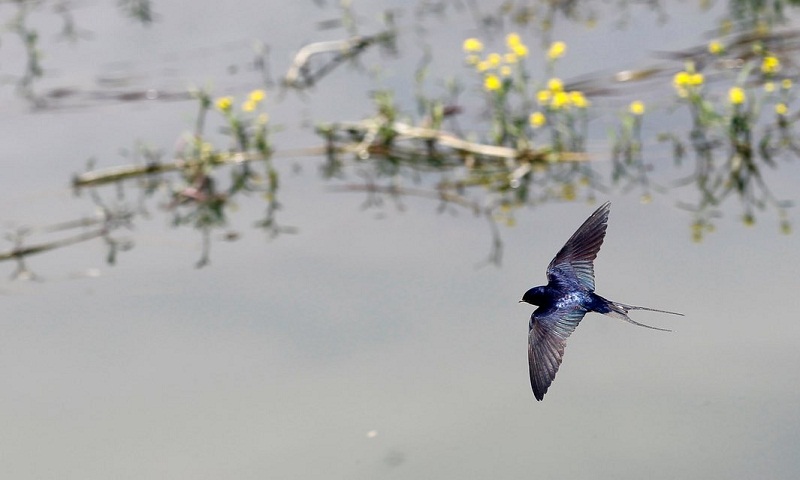Now the swallows are here, the year throws off its cloak

The arrival of the first swallows is cause for celebration, but we should also think of others making the perilous journey to reach us. Last Wednesday, early evening, the Kent-Sussex border north of Rye. I was driving home under an immoderate sky, the hawthorn around me frothy with blossom, when I saw them. Coming up the slope of the hill in front, they flashed past like thoughts and were gone, but I knew that the year wouldn’t be the same again. As usual, Ted Hughes put it best. “What is loveliest about swallows,” he wrote, “Is the moment they come / The moment they dip in, and are suddenly there.” Now swallows have arrived and it is as if the year has thrown off its cloak. Roger Deakin, writing of the coming of swallows to his Suffolk home, said that they “seem to bless the house with the spirit of the south; the promise of summer”. Early April is swallow time, the birds’ arrival an annual cause for celebration. Most of our swallows winter in South Africa and Namibia, making the long journey north to their breeding grounds in Europe in late February and early March. The 6,000 mile journey takes them anywhere from five weeks to three months to complete, with the birds flying an average of 200 miles each day. The swallows’ route takes them up over the dense jungles of central Africa, across the Sahara, through Morocco and then over the Mediterranean. Experienced birds – those that have made the trip several times – tend to fly faster and earlier, with younger swallows arriving up to four months later. In his beautiful book A Single Swallow, Horatio Clare tried to follow the birds on their perilous and haphazard migration north, finally recognising that the nearly 200m swallows that make their way up through Africa each spring follow no clear route, but that the journey is, rather, “a giant chessboard, crowded with mortal dangers”. Several studies, by the British Trust for Ornithology and the UK, Environmental Change Network, have shown the clear correlation between swallow arrival and rising temperatures. In the time of the great 18th-century swallow-lover Gilbert White, who noted the advent of the birds in his diary with an excited rendition of their Linnaean name “Hirundo domestica!!!”, the swallows appeared in late June and early July.

